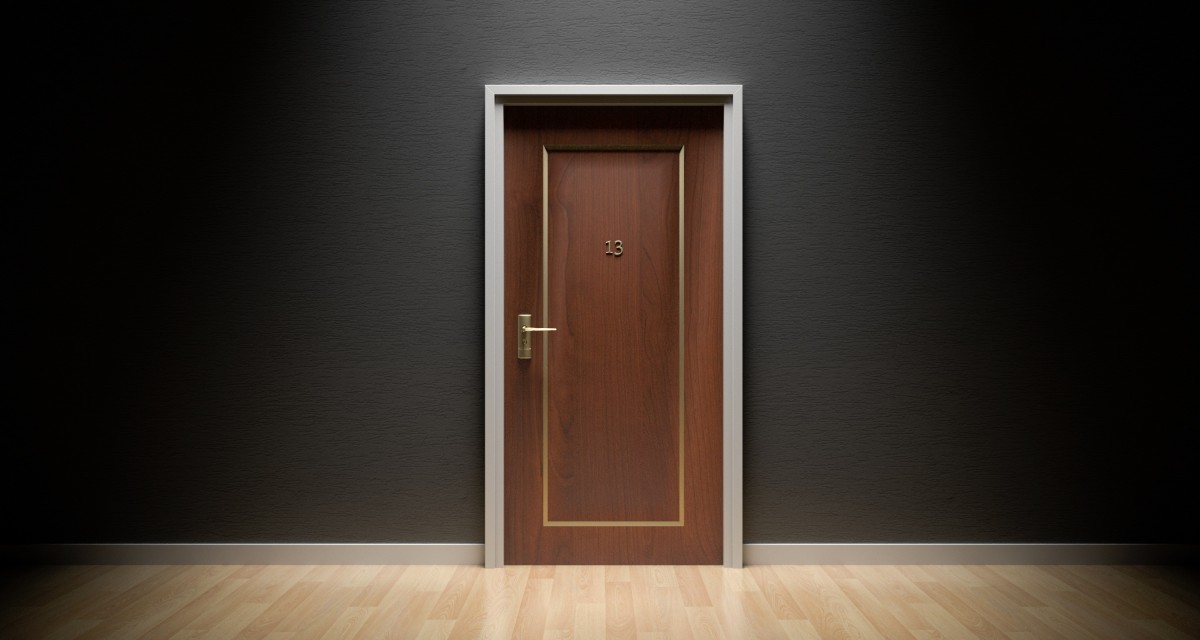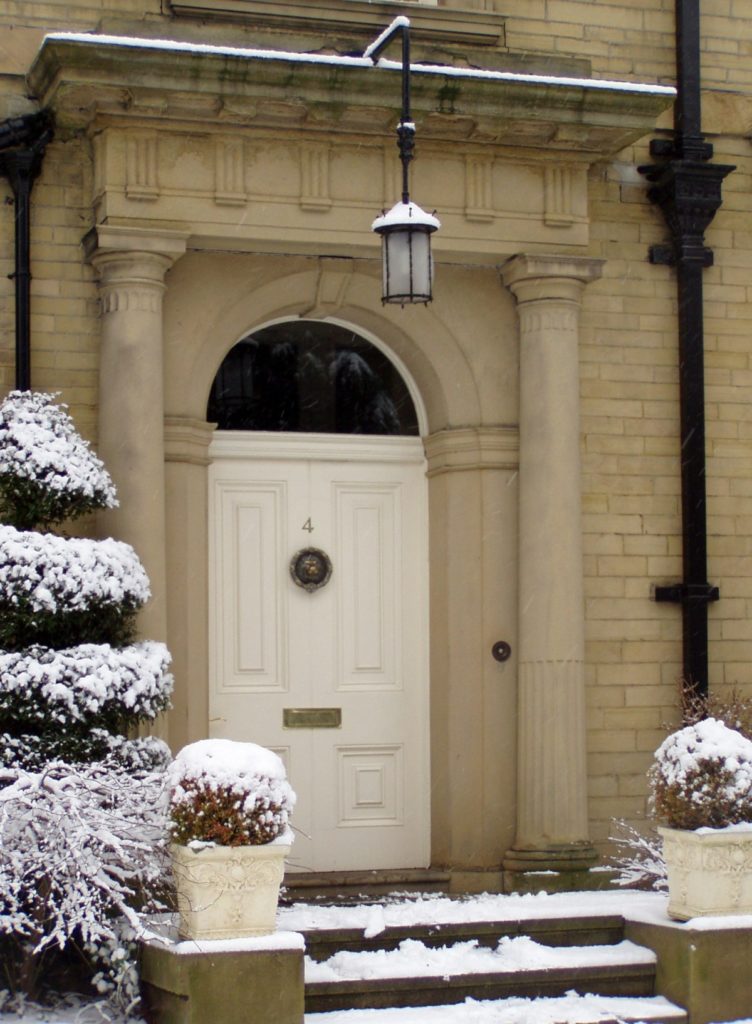Rating of the best heaters for front doors for 2022

The front door should perform two main tasks - to protect the interior from illegal entry by outsiders and create comfortable conditions for people inside the building. The second task is carried out by proper retention of warm air, which is achieved through the use of specialized heaters, which are installed either on the sash itself or on adjacent structures.

Content [Hide]
- 1 Input insulation - general information
- 2 Secrets of arranging warm doors
- 3 Difficulties of choice
- 4 Rating of the best heaters for front doors for 2022
- 4.1 Upholstery insulation for doors
- 4.1.1 4th place: “Kit for upholstery and door insulation, double batting, 160 cm, “Vinyl leather”
- 4.1.2 3rd place: “Decorative upholstery of the front door, thermal insulation, insulation for repair “Aliriber”
- 4.1.3 2nd place: “Set for upholstery and door insulation, foam rubber 5 mm, white, “Owner”
- 4.1.4 1st place: "DEPONIKA" set for upholstery and door insulation (vinyl leather, isolon)"
- 4.2 Insulation for door contour
- 4.1 Upholstery insulation for doors
- 5 Conclusion
Input insulation - general information
There must be good reasons for separately insulating the front door. Most modern models are already sufficiently provided with all the necessary components, thanks to which they successfully cope with this task. Warming may indeed be required in the following cases:
- Facing (regardless of the material) was swollen both outside and inside;
- Drafts began to constantly penetrate the room;
- Condensation began to constantly form on the inside of the door leaf;
- The leaf itself began to be covered with frost around the perimeter in the cold season.
These circumstances can be caused by improper installation, as a result of which gaps and cracks appear in the sash, and significant gaps form in the places of adjacent structures. It is these shortcomings that can be eliminated by means of insulating tapes.
There are also situations when initially the front door has seemingly good thermal insulation, but cannot retain internal heat. The reason for this may be:
- The presence of subtle microcracks on the surface of the sash.They can be formed with the assumption of careless installation, and also be a consequence of the general shrinkage of the structure in the process of constant sharp temperature changes. Putties and sealants will help solve the problem.
- Incomplete fit of the sash to the door frame. The origin of such a defect lies in the damaged canvas or in the damaged retaining loops. In this case, you will need to adjust the dimensions of the canvas or simply replace the hinge components.
- Excessively large gap between the lower part of the sash and the threshold. This situation indicates the wear of the threshold, which needs to be replaced.
All other reasons for the loss of heat-insulating qualities can be corrected by laying additional insulation tapes or replacing the current sheathing of the canvas with a better one.
Popular insulation materials
Most modern entrance groups are made of metal, wooden models are very rare and are more often made exclusively to order. For metal products, the thickness of the base sheet is typical, which ranges from 1 to 4 millimeters, which at the same time indicates a high degree of protection and allows you to sufficiently retain heat. However, bare metal can cool extremely quickly, so entry structures must have proper sheathing and adequate insulation tape around their perimeter. These components can be made from dissimilar materials, and from the same.
- mineral wool
This material is manufactured / used in strict accordance with the State Standard No. 31913 of 2011 (analogue is the European standard EN: ISO No. 9229 of 2007).The heat-insulating pad will consist of several thousand of the finest fibers, which, by joint plexus, create a special air cushion that prevents the penetration of cold air from the outside to the inside. Mineral wool can vary in density and orientation of the fibers. The average thermal conductivity is from 0.032 to 0.038 W/mK. In the production of this material, molten glass is used, coupled with other synthetic additives. According to most professionals, mineral wool is considered the best in terms of performance among heaters, since its vapor permeability is 10 times higher than standard values. Other advantages include low weight (does not give a large load on the surface of the carrier sheet), the possibility of easy selection of the layer in thickness, low fire hazard.
- Basalt slab
It is produced on the basis of a melt of mountain mineral rocks, it is often called "stone wool". Structurally and outwardly, it is somewhat reminiscent of mineral wool, but its fibers are directed not only horizontally / vertically, but also in different directions. It is due to this design feature that basalt wool can provide improved thermal insulation.
The density of basalt slabs can vary from 10 to 150 kg per cubic meter, with a thickness of 25 to 200 millimeters. Most often, this insulation is used not only for its intended purpose, but also with its help provide additional fire protection for structures.
Among the undoubted advantages of basalt slabs, one can mention the ease and convenience of cutting under different shapes, almost complete incombustibility, the possibility of a snug fit of the folded fragments.Among the shortcomings can be called hygroscopicity, as well as the need for additional fixing on the sash of the canvas.
- polyurethane foam
Another fairly popular insulation material. It is produced on the basis of modern polymers, due to which it can retain heat well indoors. In terms of technical parameters, it is very similar to rubber, but surpasses it in terms of strength. Unlike mineral and basalt wool, polyurethane is not afraid of water. Accordingly, they can also trim the outer side of the door leaf. Most often used for entrance groups installed in public and administrative buildings, the door trimmed with it can be left open for quite a long time. Due to the fact that initially the composition has a liquid aggregation and is supplied in the form of foam during installation, it is able to fill any unwanted gap in the web, making it fit to the box as close as possible. So the cold has almost no chance to get inside. The main advantage is the absence of unpleasant odors, the successful resistance to the formation of fungus / mold, as well as excess moisture and aggressive alkalis. The obvious disadvantages include the need for careful installation when applied to the entrance group, so as not to spoil the significant movable mechanisms (for example, hinges or a lock) with foam being poured, or to damage the overall appearance of the entire structure.
- Corrugated cardboard
It can be attributed to the inexpensive types of materials under consideration, which is used for budget door models. The process of its installation is not very complicated and is a simple laying of a corrugated base between layers of cardboard on the canvas. Nevertheless, sufficient rigidity can be ensured in this way.Professionals attribute low weight to the main advantages, and the main disadvantage is complete vulnerability to the negative effects of moisture.
- Cork agglomerate
This material is produced on the basis of crushed tree bark, which is pressed at a temperature of +350 degrees Celsius. This method allows you not to add synthetic chemicals and glue to the working mass. The connecting link in the material is the natural resins of the tree, which makes it possible to obtain an elastic product with a thickness of 10 to 500 millimeters. In cork agglomerate, the consumer primarily appreciates the environmental friendliness and ease of cutting operations relative to the independent production of fragments with irregular geometry. However, the strength of fixation on the canvas will depend on the type of adhesive used, but this will not play a big role for thermal conductivity. It is approximately 0.04 W / mK at a standard operating temperature of -180 to +110 degrees Celsius.
The popularity of the agglomerate is also ensured by the presence of significant vibration and noise insulation qualities. It can perfectly absorb sounds, making indoor spaces quieter. This property has become available due to the high density of cork, which ranges from 95 to 130 kg per cubic meter. This material is highly recommended for use at the entrance groups of structures located in noisy places in large cities. Also, it should be noted its environmental friendliness, as well as the absence of an unpleasant odor (even with prolonged exposure to direct sunlight). The sheet itself does not create an excessive load on the door frame.Of the shortcomings, only high cost, poor fire resistance (after all, pure wood), the need for enhanced fixation on the sash can be noted.
- Isolon foil
Another type of popular heat material. It was specially designed for finishing metal structures. Visually it looks like foamed and cross-linked polyethylene, which gives it the properties of lightness with sufficient thermal insulation (there are capsules with air inside the base). The product is supplied in rolled rolls with a thickness of 10 to 30 millimeters, and the density can vary from 28 to 66 kg per cubic meter. The thermal conductivity index is 0.037 W/mK. Isolon is easy to install, it is easy to fix it on the sash, without using sealant or foam (just press the foil very tightly to the surface). It is the foil layer that is the advantage of this material and provides it with the main functionality. The foil, like a screen, perfectly reflects heat, returning it inside the apartment, and cold air masses remain clearly outside. The material is also easy to cut to the desired size, it can easily cover unwanted gaps in the joints of the door frame, while increasing the level of sound insulation. Among the shortcomings, we can mention the average level of moisture absorption, the presence of a synthetic smell and the ability to maintain combustion.
- Expanded polystyrene and foam
This material is one of the oldest heaters. Currently, it is more often mounted in budget entrance groups. It is made on the basis of foamed polymers, which, when cured, form a multi-cell structure. Due to the presence of many individual cells, heat is not able to quickly penetrate through them. The thermal conductivity index is in the range of 0.041 W / mK.The release is carried out in the form of plates with a thickness of 15 to 200 millimeters. The density of these materials can be 35, 25 or 15 kg per cubic meter. Polyfoam does not have an unpleasant odor, is small in weight, can be produced in various sections, and is resistant to the negative effects of moisture. Among the shortcomings, they note the complete impossibility of resisting combustion, severe crumbling during trimming, the need for additional fixation with glue to the surface.
Secrets of arranging warm doors
Usually, entrance doors sold in retail outlets are already provided with some insulation material. However, it also happens that the material has to be replaced (due to the preparation of the product for use in harsher weather conditions) or simply strengthened. This task can be done on your own. Depending on the insulation being installed, the process may take a number of steps (in some cases there will be more, in others less), but three main ones will always be present:
- It is necessary to take accurate measurements from the canvas and cut out the insulation sheet according to the obtained sizes and shapes. If the base does not have stiffeners, then they can be built independently using wooden blocks for this.
- If the insulation material used provides for additional fixation, then it is advisable to carry it out with a suitable adhesive or mounting foam. Through it, you can fill the gaps in the joints.
- At the end of the installation of the insulation, it must be closed with a decorative panel, which can be made of any materials. The main thing is not to forget to cut special holes in it for a lock, eye, handle or loop.
Condensation control
A similar need may arise if the applied insulation has an increased thermal conductivity. The appearance of condensation is associated with a significant difference between the internal and external temperatures. To solve such a problem, it will be necessary to create a thermal break, which can be achieved by installing an additional door (preferably wooden, if the first one is iron). Thus, the role of thermal break will take on a small space formed between the first and second doors. However, this method is already considered obsolete. Today's production can offer special thermal doors in which this problem has already been solved. In fact, they are ordinary structures, only their main insulation is additionally reinforced with a budgetary layer, which is foam plastic or corrugated cardboard.
Sealing door contours
Most often, drafts occur due to the formation of considerable gaps located between the door leaf and the frame. These gaps can be sealed with special seals, which are made on the basis of rubber. As a rule, they have a sticky side, which is glued to the right place, reliably preventing the ingress of cold air inside or the exit of warm air outside. These tapes can have different widths or profiles, and if desired, the sticky side can be independently reinforced with an additional adhesive layer. Sealing tapes are easy to find on sale, however, it will not be difficult to make them yourself. The easiest way is to take a piece of foam rubber, wrap it in upholstery material (for example, leatherette), and simply nail the resulting structure with small carnations to the door frame in the right place.The only drawback of this method is that in the absence of the necessary experience, the appearance of the resulting upholstery may leave much to be desired.
Threshold insulation
The contours of the doors and the canvas itself are not the only areas through which heat can flow out of the house. Thresholds can also be a reason for this. It is quite easy to detect such a problem, because when opening the doors, a lingering draft will be easily felt by the feet. You can overcome this defect in the following ways:
- Simply replace the threshold itself with a new one, ideally matching it in height with respect to the sash;
- Create a kind of roller (for example, foam rubber in leatherette), with which to fill the air-permeable gap;
- Insert a special factory copy of a special brush, whose frequent pile will retain heat (also attached independently to the threshold).
door panel insulation
Insulated sheathing can be made from the materials that were listed above. The whole process may include the following steps:
- The door is removed from the hinges and placed horizontally on a flat surface;
- The external decorative plug-panel is removed, and the selected type of filler is placed inside the structure;
- If it is produced in sheet form, then its dimensions should fit the selected dimensions as accurately as possible;
- In principle, it is desirable to additionally strengthen any material (except foam and isolon) with glue or fasteners;
- Then, on top of the installed insulation, an external decorative panel is applied with slots for the main elements - from the handle to the eye;
- At the end, the sash is hung on hinges, which are pre-lubricated.
Difficulties of choice
Before buying a particular type of door insulation, you should pay attention to the following points:
- Technical characteristics and the possibility of their effective application in future operating conditions;
- Structural conditions and installation features of the filler/tape;
- The purpose of the door itself is a home option or a public one (the choice of the type of filler will depend on this);
- Cost - it is not advisable to equip an elite door with a heater from the category of "economy class" and vice versa, because the effect of such manipulations can be mutually exclusive.
Rating of the best heaters for front doors for 2022
Upholstery insulation for doors
4th place: “Kit for upholstery and door insulation, double batting, 160 cm, “Vinyl leather”
votes 0
This upholstery kit will help improve the appearance of the door after mechanical damage or give it the desired aesthetics. Each set contains a cut of high quality artificial leather, insulation, which is enough for the entire canvas and the manufacture of rollers, decorative nails, a nylon string for creating a pattern and instructions for self-installation. The set also contains a large piece of batting, the dimensions of which allow you to fold the insulation on the canvas in half, as well as to make rollers that will exclude possible drafts. The recommended cost for retail chains is 890 rubles.

- Eco-friendly material;
- Excellent equipment;
- Small price.
- Not detected.
3rd place: “Decorative upholstery of the front door, thermal insulation, insulation for repair “Aliriber”
votes 0
The set is used as a universal heat insulator in many areas. It perfectly retains heat, so it is often used for door upholstery.The material serves as a barrier to the penetration of cold air from the street or entrance, at the same time, it does not allow warm air to leave the room. The canvas is durable, does not lose its original shape and structure for decades, is lightweight and does not weigh down the structure. Batting retains heat well and shields sound. The use of batting is preferable because it is usually made from cotton raw materials and is more environmentally friendly. It is resistant to tearing and abrasion, has a high quality of dyeing, is elastic, breathable, resistant to bacteria and fungi. The recommended cost for retail chains is 900 rubles.

- Long service life;
- Good tear resistance;
- Appropriate degree of protection.
- Not detected.
2nd place: “Set for upholstery and door insulation, foam rubber 5 mm, white, “Owner”
votes 0
This lined product is a pleasant and soft material that imitates natural leather well and has excellent decorating properties. Decorative nails in the kit will help create a unique style for the entire interior. Faux leather is a durable upholstery material that has increased wear resistance and is resistant to temperature extremes, so it is ideal for upholstery of the entrance group. The foam rubber included in the set is not inferior in quality to isolon or batting. This is an excellent insulation with good soundproofing properties. The recommended cost for retail chains is 1050 rubles.

- Decorative carnations in a set;
- Excellent quality;
- Affordable price.
- Not detected.
1st place: "DEPONIKA" set for upholstery and door insulation (vinyl leather, isolon)"
votes 0
This upholstery kit with vinyl leather is good to use for metal or wooden entrances. The material can compete with expensive upholstery samples. A set with isolon (foamed polyethylene) will update the external condition, hide chips, cracks, scratches and other defects, give the room a well-groomed appearance, improve thermal conductivity and increase the level of sound insulation. The kit has everything you need: artificial leather, a canvas measuring 110x205 cm, isolon 3 mm thick, 100 nails, a string for decorative trim, instructions. Upholstery fabric will protect the canvas from the effects of temperature changes and prevent it from drying out (if wood is upholstered). The material has high wear resistance, and with the help of decorative nails and string, you can create any desired pattern. The recommended cost for retail chains is 1185 rubles.

- Possibility of artistic decoration;
- Additional soundproofing qualities;
- Available mounting.
- Not detected.
Insulation for door contour
3rd place: "DIEP" foam rubber, strip, for noise insulation and draft protection for doors and windows"
votes 0
This sealing strip is evenly foamed, has a smooth inner and outer surface, excellent elasticity, high wear resistance. The backing is heavy duty, with a unique mesh and adhesive backing that adheres strongly to give doors and windows long lasting protection.The tape comes with adhesive and can be cut to fit actual door and window sizes. Widely used in all kinds of sliding windows, cabinets, entrance doors, etc., reduce possible damage. The recommended cost for retail chains is 220 rubles.

- Strong adhesive layer;
- Multifunctionality and versatility;
- Simple application.
- Not detected.
2nd place: "SV-FORUM" self-adhesive insulation 8x8 mm, 14 m
votes 0
This sample is made on the basis of polyethylene foam. Has a protective paper layer. It is used as a means for thermal insulation of residential and other premises. The tape withstands large fluctuations in temperature, moisture-proof, designed for a long service life. Can be applied to both windows and doors. The recommended cost for retail chains is 230 rubles.

- Versatility;
- Sufficient level of thermal insulation;
- The presence of a protective layer.
- Not detected.
1st place: "Profile-D for doors ISOTAPE black 10 m"
votes 0
The sample is directly intended for sealing door gaps with dimensions of 3-7 mm. Represents the tape sealing seals with the applied layer of the sticky reinforced glue protected by tread paper. Designed for sealing and sealing door blocks in order to eliminate drafts, moisture and dust penetration, create effective heat and sound insulation, eliminate vibration, reduce energy and economic costs.It has excellent adhesion to blocks made of wood, metal and plastic, including painted ones, resistance to high and low temperatures and atmospheric ozone, does not swell under the influence of water and moisture. The recommended cost for retail chains is 290 rubles.

- Many protective properties;
- Good value for money;
- Easy installation.
- Several small footage delivery.
Conclusion
The use of door insulation is especially important for the Russian consumer, due to the location of most regions of the Russian Federation in the zone with cold winter temperatures. Thus, the choice of this component should be approached as carefully as possible in order to properly protect your home from the penetration of cold.
new entries
Categories
Useful
Popular Articles
-

Top ranking of the best and cheapest scooters up to 50cc in 2022
Views: 131653 -

Rating of the best soundproofing materials for an apartment in 2022
Views: 127693 -

Rating of cheap analogues of expensive medicines for flu and colds for 2022
Views: 124520 -

The best men's sneakers in 2022
Views: 124036 -

The Best Complex Vitamins in 2022
Views: 121941 -

Top ranking of the best smartwatches 2022 - price-quality ratio
Views: 114981 -

The best paint for gray hair - top rating 2022
Views: 113397 -

Ranking of the best wood paints for interior work in 2022
Views: 110320 -

Rating of the best spinning reels in 2022
Views: 105331 -

Ranking of the best sex dolls for men for 2022
Views: 104369 -

Ranking of the best action cameras from China in 2022
Views: 102217 -

The most effective calcium preparations for adults and children in 2022
Views: 102012









